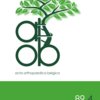Birmingham hip resurfacing: a systematic review of outcomes at minimum 10-years follow-up
Birmingham hip, hip resurfacing, metal-on-metal, long-term, 10 years
Published online: Jan 08 2024
Abstract
Although controversy surrounding the use of metal-on-metal (MoM) arthroplasty implants continues to exist, satisfactory clinical and radiological outcomes have been reported following Birmingham Hip Resurfacing (BHR) at long-term follow-up, leading to an Orthopaedic Data Evaluation Panel (ODEP) rating of 13A. The purpose of this study was to systematically review the literature to evaluate the functional outcomes, radiological outcomes and revision rates following BHR at a minimum of 10 years follow-up. Using the PRISMA guidelines, two independent reviewers performed a literature search using Pubmed, Embase and Scopus databases. Only studies reporting on outcomes of BHR with a minimum of 10 years’ follow-up were considered for inclusion. A total of 12 studies including 7132 hips (64.8% males), with mean follow-up of 11.5 years (10-15.3), met our inclusion criteria. Of included patients, 94.3% of patient underwent BHR for osteoarthritis at a mean age was 52.0 years (48-52). At final follow-up, 96% of patients reported being satisfied with their BHR, with mean Harris Hip Scores of 93.6 and Oxford Hip Scores of 16.5. Rates of radiological femoral neck narrowing of greater than 10% and non-progressive radiological loosening were reported as 2.0% and 3.8% respectively. At final follow-up, the overall revision rate was 4.9% (334/7132), deep infection rate was 0.4%, metal allergy/insensitivity rate was 1.6%, metal reaction rate was 0.3%, rate of peri-prosthetic fracture was 0.9% and aseptic loosening rates were 1.6%. This systematic review demonstrates that BHR results in satisfactory clinical outcomes, acceptable implant survivorship, low complication rates and modest surgical revision rates in the long-term at minimum 10-year follow-up.
